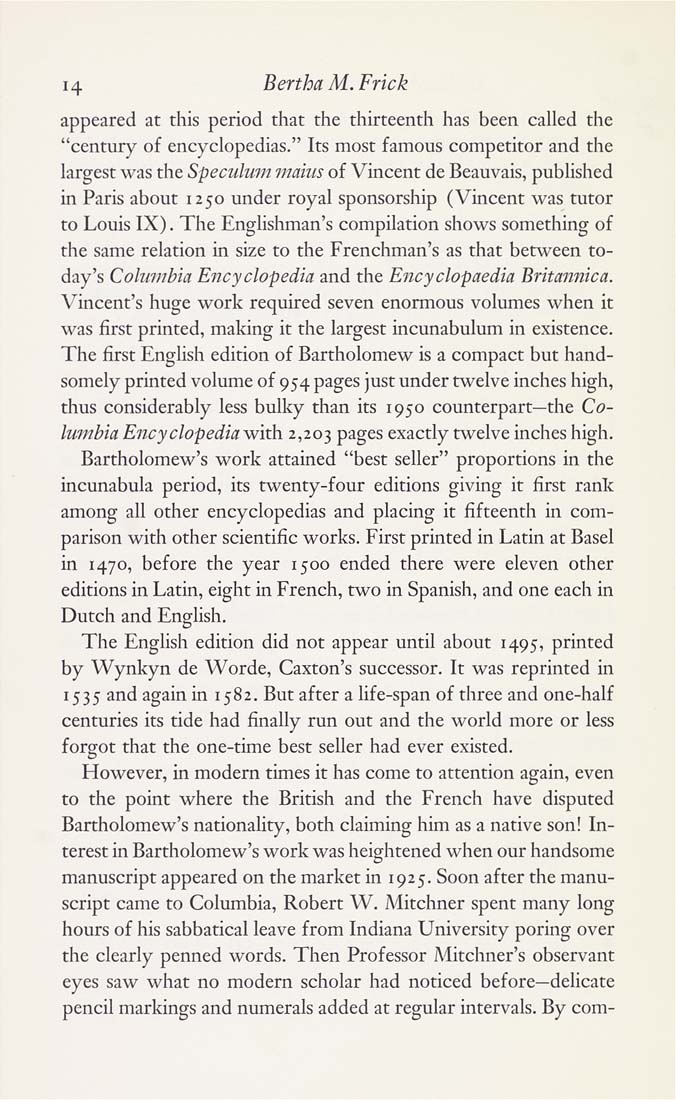Columbia Library columns (v.2(1952Nov-1953May))
(New York : Friends of the Columbia Libraries. )
|
||
|
|
|
|
| v.2,no.3(1953:May): Page 14 |

14 Bertha M. Frick appeared at this period that the thirteenth has been called the "century of encyclopedias." Its most famous competitor and the largest was the Speculum mains of Vincent de Beauvais, published in Paris about 1250 under royal sponsorship (Vincent was tutor to Louis IX). The Englishman's compilation shows something of the same relation in size to the Frenchman's as that between to¬ day's Columbia Encyclopedia and the Encyclopaedia Britannica. Vincent's huge work required seven enormous volumes when it was first printed, making it the largest incunabulum in existence. The first English edition of Bartholomew is a compact but hand¬ somely printed volume of 954 pages just under twelve inches high, thus considerably less bulky than its 1950 counterpart—the Co¬ lumbia Encyclopediawkh 2,203 pages exactly twelve inches high. Bartholomew's work attained "best seller" proportions in the incunabula period, its twenty-four editions giving it first rank among all other encyclopedias and placing it fifteenth in com¬ parison with other scientific works. First printed in Latin at Basel in 1470, before the year 1500 ended there were eleven other editions in Latin, eight in French, two in Spanish, and one each in Dutch and English. The English edition did not appear until about 1495, printed by Wynkyn de Worde, Caxton's successor. It was reprinted in 1535 and again in 1582. But after a life-span of three and one-half centuries its tide had finally run out and the world more or less forgot that the one-time best seller had ever existed. However, in modern times it has come to attention again, even to the point where the British and the French have disputed Bartholomew's nationality, both claiming him as a native son! In¬ terest in Bartholomew's work was heightened when our handsome manuscript appeared on the market in 1925. Soon after the manu¬ script came to Columbia, Robert W. Mitchner spent many long hours of his sabbatical leave from Indiana University poring over the clearly penned words. Then Professor Aditchner's observant eyes saw what no modern scholar had noticed before—delicate pencil markings and numerals added at regular intervals. By com- |
| v.2,no.3(1953:May): Page 14 |







